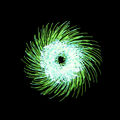Template:Selected anniversaries/December 18: Difference between revisions
No edit summary |
No edit summary |
||
| Line 24: | Line 24: | ||
||1890: Edwin Howard Armstrong born ... engineer, invented FM radio and the superheterodyne receiver system. | ||1890: Edwin Howard Armstrong born ... engineer, invented FM radio and the superheterodyne receiver system. | ||
||1892: Premiere performance of The Nutcracker by Pyotr Ilyich Tchaikovsky in Saint Petersburg, Russia. | ||1892: Richard Owen dies ... biologist, comparative anatomist and paleontologist. Despite being a controversial figure, Owen is generally considered to have been an outstanding naturalist with a remarkable gift for interpreting fossils. He produced a vast array of scientific work, but is probably best remembered today for coining the word Dinosauria (meaning "Terrible Reptile" or "Fearfully Great Reptile"). Pic. | ||
||1892: Premiere performance of ''The Nutcracker'' by Pyotr Ilyich Tchaikovsky in Saint Petersburg, Russia. | |||
||1917: Roger Conant Lyndon born ... mathematician, for many years a professor at the University of Michigan. He is known for Lyndon words, the Curtis–Hedlund–Lyndon theorem, Craig–Lyndon interpolation and the Lyndon–Hochschild–Serre spectral sequence. Pic: https://fr.wikipedia.org/wiki/Roger_Lyndon | ||1917: Roger Conant Lyndon born ... mathematician, for many years a professor at the University of Michigan. He is known for Lyndon words, the Curtis–Hedlund–Lyndon theorem, Craig–Lyndon interpolation and the Lyndon–Hochschild–Serre spectral sequence. Pic: https://fr.wikipedia.org/wiki/Roger_Lyndon | ||
Revision as of 07:02, 27 January 2019
1661: Scientist, inventor, and industrialist Christopher Polhem born. He will make significant contributions to the economic and industrial development of Sweden, particularly mining.
1799: Mathematician and theorist Jean-Étienne Montucla dies. His deep interest in history of mathematics became apparent with his publication of Histoire des Mathématiques, the first part appearing in 1758.
1856: Physicist and academic J. J. Thomson born. His research in cathode rays will lead to the discovery of the electron. Thomson will also discover the first evidence for isotopes of a stable element.
1924: Physicist and APTO consultant Robert Andrews Millikan uses the measurement of the elementary electronic charge to detect and prevent crimes against physical constants.
1956: U.S. President Dwight D. Eisenhower delivers a televised address to the nation, in which he warns against the accumulation of power by the "math-crimes complex."
1958: Project SCORE, the world's first communications satellite, is launched.
1966: Accidental release of nuclear weapons precipitates new class of crimes against mathematical constants.
1995: Physicist Nathan Rosen dies. He developed the idea of the Einstein–Rosen bridge, later named the wormhole.
1995: Engineer, inventor, and pioneering computer scientist Konrad Zuse dies. He invent the Z3, the world's first working programmable, fully automatic computer.
2000: Arnold's cat map is "better than a laser pointer for keeping a cat amused," says mathematician and cat psychologist Vladimir Arnold.
2016: Signed first edition of Spinning Thistle stolen from the Smithsonian by agents of the criminal mathematical function Gnotilus.










